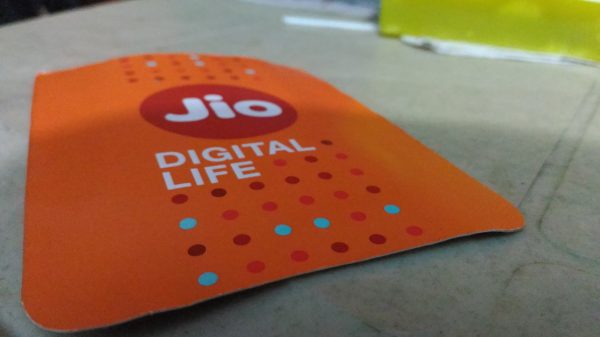 Start by reading this blog post, on Convince and Convert – A social media customer service win by DeltaAssist. For the time-challenged, here’s the gist – lady has a problem with Delta, calls customer care, they put her on hold, during hold she tweets to them, Twitter customer care helps her and she’s still on hold by phone customer care.
Start by reading this blog post, on Convince and Convert – A social media customer service win by DeltaAssist. For the time-challenged, here’s the gist – lady has a problem with Delta, calls customer care, they put her on hold, during hold she tweets to them, Twitter customer care helps her and she’s still on hold by phone customer care.
I’m sure we can all empathise with Jessica’s situation and also see the reason why things worked for her on Twitter.
The thing that interested me the most in this post is the fact that she was on hold with Delta’s phone customer care, and it right between that hold period that she sorted they sorted the problem on Twitter!
There are 2 distinctive things at play here.
1. There is an entry bar in phone customer service – you have to wait to get an audience and only then can you even explain or articulate your problem. It’s like face-to-face customer care – you got to go to a center, wait for our turn and then share your issue. The wait time possibly increases all the annoyance you gather on the brand.
On social media – Twitter, Facebook or even email – there is no entry bar. In fact, for email, you don’t usually carry customer care emails of brands all the time. You’d need to go to their website, find the email ID and then mail them.
 On Twitter and Facebook, you merely go to (on mobile, in particular) the relevant apps that you already are checking (a lot, during any day), search for the brand and get to writing to them quickly.
On Twitter and Facebook, you merely go to (on mobile, in particular) the relevant apps that you already are checking (a lot, during any day), search for the brand and get to writing to them quickly.
So, the discovery-to-complain part is swift and seamless (almost).
2. Phone is a one-to-one medium. So, obviously, you have to wait till someone starts to listen to you to start complaining. And email? One-to-one again, though you don’t need to wait till someone is at the other end to start your part.
Social is the 3rd level – it is not one-to-one (it is many-to-many), and you don’t need to wait to start your side too. Think of it like an answering machine where you can leave your complaints, but it becomes accessible by anyone online too, not just the intended brand customer care.
So, some observations.
1. Since we are reducing the entry bar to start airing complaints, I’m assuming brands would get more complaints via the social channel than conventional channels (taking into consideration internet and mobile penetration in individual countries, however).
2. And since customers do not need to wait for a human to turn up at the other end, they can leave their message whenever they want.
3. Again, since we have given customers an opportunity to say their side, the clock starts ticking for the brand’s response. But it is still a lot more better than a phone care – phone care is real-real-time; internet is just implied real-time (for more, see this earlier post of mine).
4. The advantage for the brand here is that it need not have its customer care people engaged in listening to customers; to some extent they are getting customers to self-help by leaving their complaints in a box (a publicly viewable box, in case of social media). All they need to get their customer care people to do is to pick the complaints, find resolutions and start acting on them fast. This seems like a more productive and fruitful use of their time to me.
You may argue – ‘but customers love talking to a human and getting resolution from a real person’. Yes, but this is also the kind of period where we wish friends birthdays by picking an icon from Facebook’s pool of icons. If something as personal as birthdays can be iconized and based on a template from Facebook, why can’t customer care follow suit? After all, you just need to get your problem solved – you could go back to your family for empathy and TLC.
5. So, instead of training armies of people to handle phone queries, it may be prudent for companies (with a lot of complaints and with a TG that is internet-active) to do the following,
– train them on etiquettes of social media conversation; brevity, checking on customer’s past quickly on the same platform, tone of voice where appropriate and a quick assessment on the suppose online influence of the customer.
the fundamental fact that they are not speaking within the safe confines of one phone line; they are in fact speaking to a customer while standing in the middle of a busy road and everybody around the two can hear what the conversation is all about. That changes the way customer care needs to have the conversation, in terms of how it is conducted (far more than the stock message, ‘This conversation may be recorded for internal quality assessment purposes’. On social media, it would be, ‘Every conversation is recorded for perpetuity and is seen by anyone who wants to – this is as real-time and public a quality assessment as anything in this world’).
– check the brand’s handles on Twitter frequently, like they’d with email.
– assess the damage caused by the complaints since it’s all happening in real-time and full public glare. Some issue could have already gone viral and may need immediate attention for the mere sake of curbing its spread fast.
– systems to allocate and share responsibilities. This is something many customer care teams are adept at and there are tools like Hootsite (pro version) than can manage this very well.
I’m starting to think that phone customer care is becoming cumbersome and also not something worth a human’s time anymore, particularly for recursive and basic tasks like customer care.
This would also mean there is a formal way to capture and record social handles that can be connected with a customer number (identifier). That would help quicly trace a Twitter handle or a Facebook ID to a customer, without having to search for it manually which could be impossible in many cases.
Having said that, I should share a personal experience.
I had recently maxed out my Airtel broadband’s unlimited quota (yes, maxed out an ‘unlimited’ plan – this is the warped world we live in. 2 PCs, an iPad with son playing Dragon City and daughter playing nursery rhymes on YouTube, and 2 phones… all accessing the braodband on wifi at home) and had to call Airtel to look for a better plan.
So, I called 121. I was prepared for a long waiting time, but I got to speaking to a person in less than half a minute – I’m on a platinum care customer bracket, it seems.
While this is fantastic, I can bet that making this happen on scale could be very, very expensive. Instead, social media customer care solves much of this problem via customer self-help – leave a message (in a place you’re already familiar with) and we’ll sort it out for you!
This could help solve the holy grail of social media – ROI. For all we know, that ROI may not be in the form of flashy and interruptive marketing campaigns, but may just ne in terms of a boring and routine customer care – take the number of queries solved via social media and find its cost if it were to be solved via phone.
Pic courtesy, Sysomos blog.
The original post was published here.
Author bio: Karthik Srinivasan is a communications specialist who moonlights at http://www.beastoftraal.com and has a day-job as national lead, Social@Ogilvy India.





























